Eating locally and seasonally sounds great until about… this point in the year. If you’re eating 100% from local farms in GA, then you haven’t had a farm fresh tomato in months, you may have almost forgotten how to shuck an ear of corn, you’re wondering where GA winter fruit is, and you’re becoming oh-so-well acquainted with root veggies, carrots, and kale. Eating seasonally is much harder than it sounds. While few of us manage to eat 100% locally and seasonally, there are so many reasons why focusing on buying and eating local and seasonal produce is beneficial.
First of all, it’s beneficial for our bodies! The longer a produce item has gone since harvesting, the less nutrient dense it is. Eating seasonal veggies ensures that you’re getting the freshest veggies with the least distance and time traveled, meaning a more nutrient dense food item. In that same vein, eating seasonally means reducing the amount of carbon emissions required to get that vegetable to you so it’s a win for our planet too.
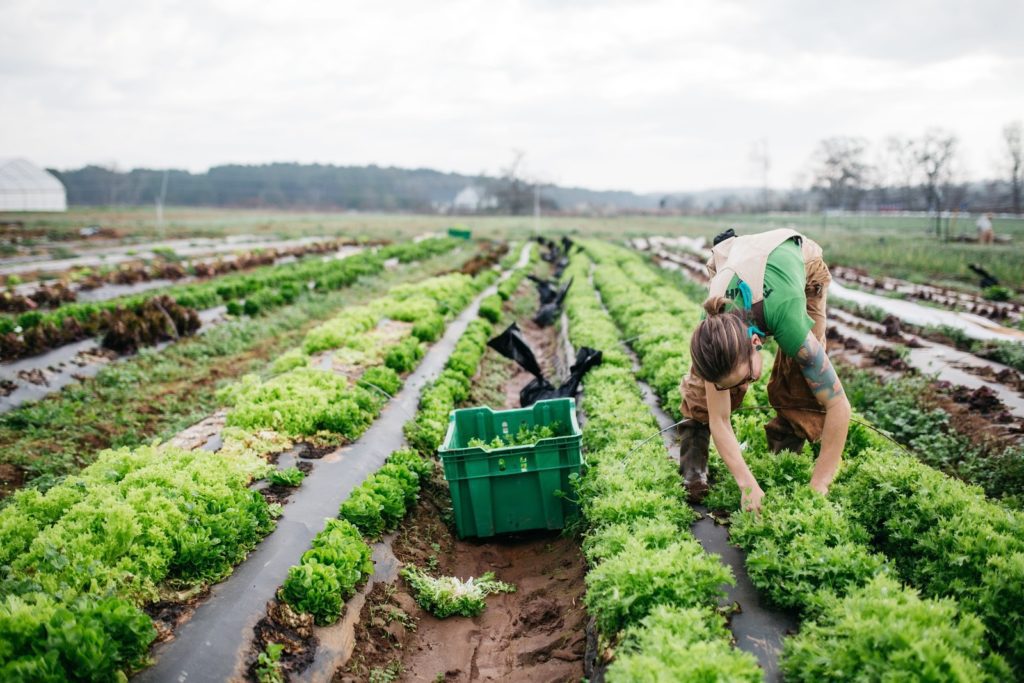
And while that all sounds well and good, at this time of year, as I’m starting my own spring and summer garden, I do start to long for spring berries and summer tomatoes, peppers and corn. While spring berries are hopefully just weeks away, it still takes some creativity to remain squarely present and enjoy the harvest of this winter season.
I’ve compiled a few of my go-to strategies when I have lots of winter veggies on hand and need new ideas on how to use them.
Quick and Easy Veggie Roasts
The most simple prep method of all: dice up your veggies, throw on some butter or olive oil and seasoning and roast! Honestly butter, salt and pepper is great. But, when I’m looking to switch things up, I either make up my own spice combo or use one of these seasoned salts.
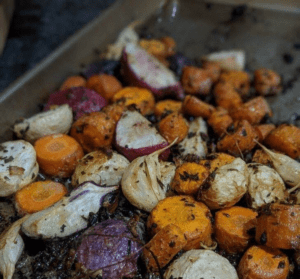
Any-Kind-of-Vegetable Winter Soups
There’s a basic formula to most soups that when followed can be mixed up for any veggies you have and done with any flavor profile. Here are a few spice combination ideas to get your wheels turning:
- Classic winter veggies with broth – think chicken noodle soup but with veggies
- Coconut Curry Soup – this can be so warm and comforting and in most cases is dairy-free
- Blended potato broccoli cauliflower soup – blending soup gives it such a unique texture that makes it feel completely different
- Southwest veggie soup – Save this one for the summertime when you need to empty your fridge of summer veggies!
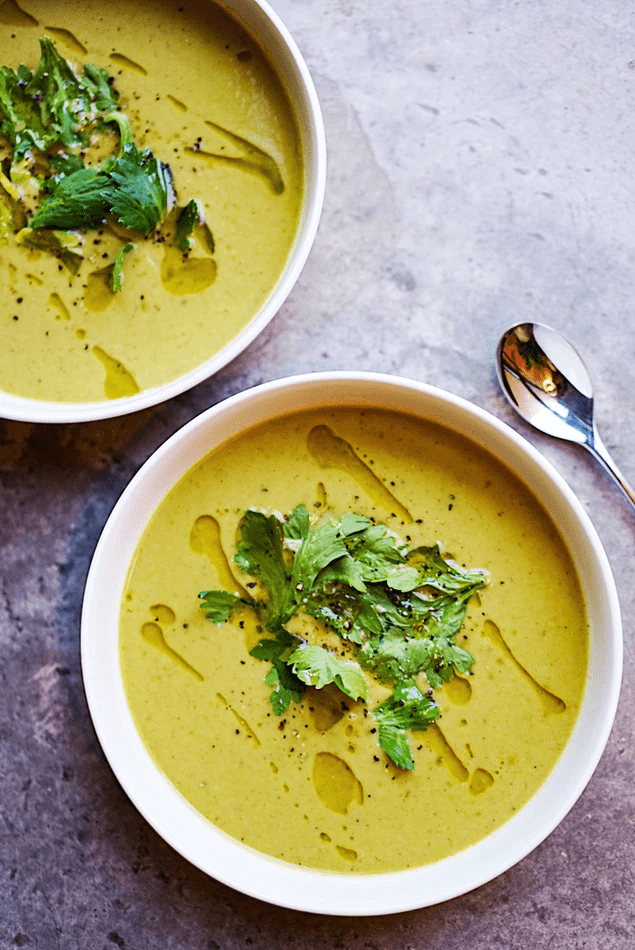
Veggie & Fruit Smoothies
Since smoothies are so cold it feels counter-intuitive, but winter is my favorite season for good smoothies. I think it’s because – unpopular opinion – I don’t naturally love leafy greens or salads, so throwing a bunch of veggies and fruits in a blender is one of my favorite ways to get lots of fruits and veggies in. In the times where my fruit and veggie drawers have filled up without my realizing, I usually prep ahead several smoothies by cutting and portioning out the ingredients and sticking them in the freezer. Then when I’m ready, I add liquid and blend!
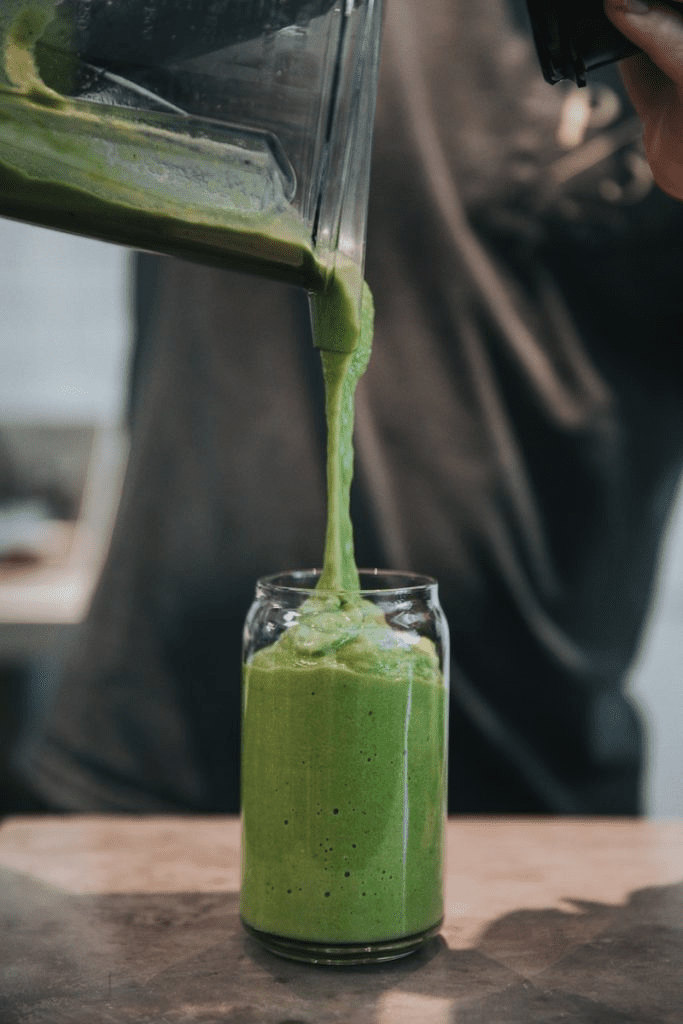
Here’s my strategy:
- First of all, having a powerful blender has been a total game changer (and we don’t get paid to say that!)
- A good base: frozen bananas are top choice! I have them recurring in my basket and just freeze the ones I don’t eat in time. Also good: Organic plain yogurt, avocado or kefir.
- Liquid of choice: milk, nut milk, or even water if it’s veggie heavy.
- Sweetener as needed: honey, agave, or dates.
- Don’t be afraid of vegetables: With a good base, you can sneak in plenty of greens and root vegetables to pack in the nutrition.
- Mix-Ins: Get creative! A few ideas: nut butters, protein powder, flax seeds, chia seeds, bee pollen, wheatgrass, hemp powder and ginger (fresh or frozen).
Whatever veggies and fruits are in your fridge, there’s a smoothie recipe out there – just google it! Here’s a few of my favorite go-to combos:
- Beet smoothie
- Sweet Potato smoothie (Also good with carrots!)
- Green apple smoothie
- Winter fruit smoothie
Veggie Skillets
This is a go-to move for us. We have onions and sweet potatoes as recurring items in our basket because they are the best starting point (IMO) for a good veggie skillet. We usually add some type of ground meat, and then whatever other root veggies or greens we have on hand.
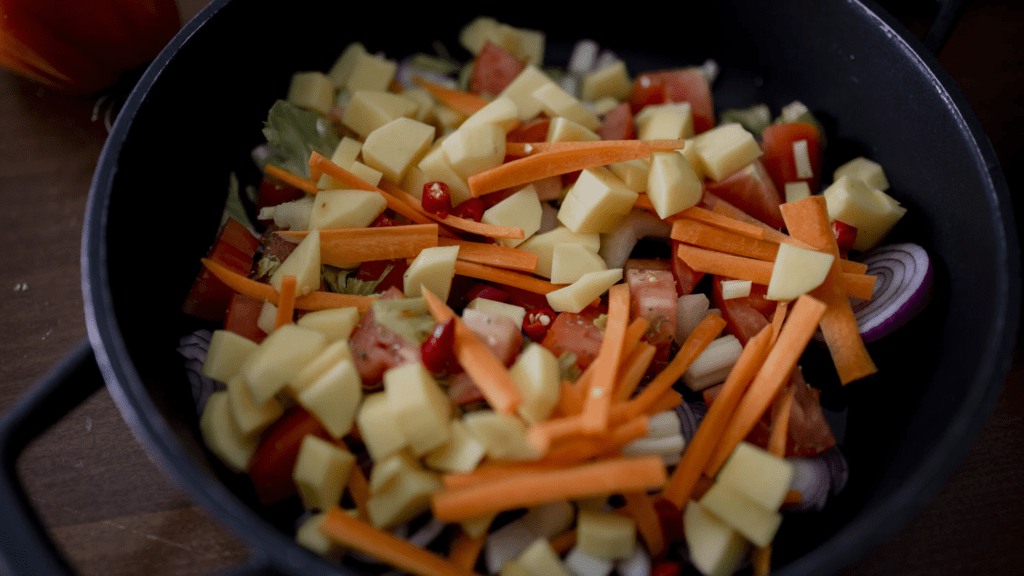
Honestly I don’t use a recipe for this because my goal is always to maximize using up veggies in my fridge. My approach is usually something like this:
- Sauté alliums (onions, garlic, etc.)
- Cook ground meat if using (Italian Sausage is also an item I automatically order from Fresh Harvest as bi-weekly recurring for this reason.) Mushrooms are a great non-meat earthy addition.
- Add in potatoes (any kind, and potentially more than one) and any other root veggies (carrots, turnips, radishes) and sauté until soft.
- Add in any greens on hand and cook until just barely wilted
- Add a sauce on top for serving:
There are a million ways to use up veggies in the fridge, and there are so many resources at our fingertips when we get stuck. As someone who has been receiving a weekly Fresh Harvest basket for over 4 years, I definitely know the feeling of my produce stacking up without realizing it. In those moments, it’s been super helpful to have a few strategies on how to use those ingredients before they go bad. We’d love to hear your strategies! Let us know your go to strategies on Instagram.
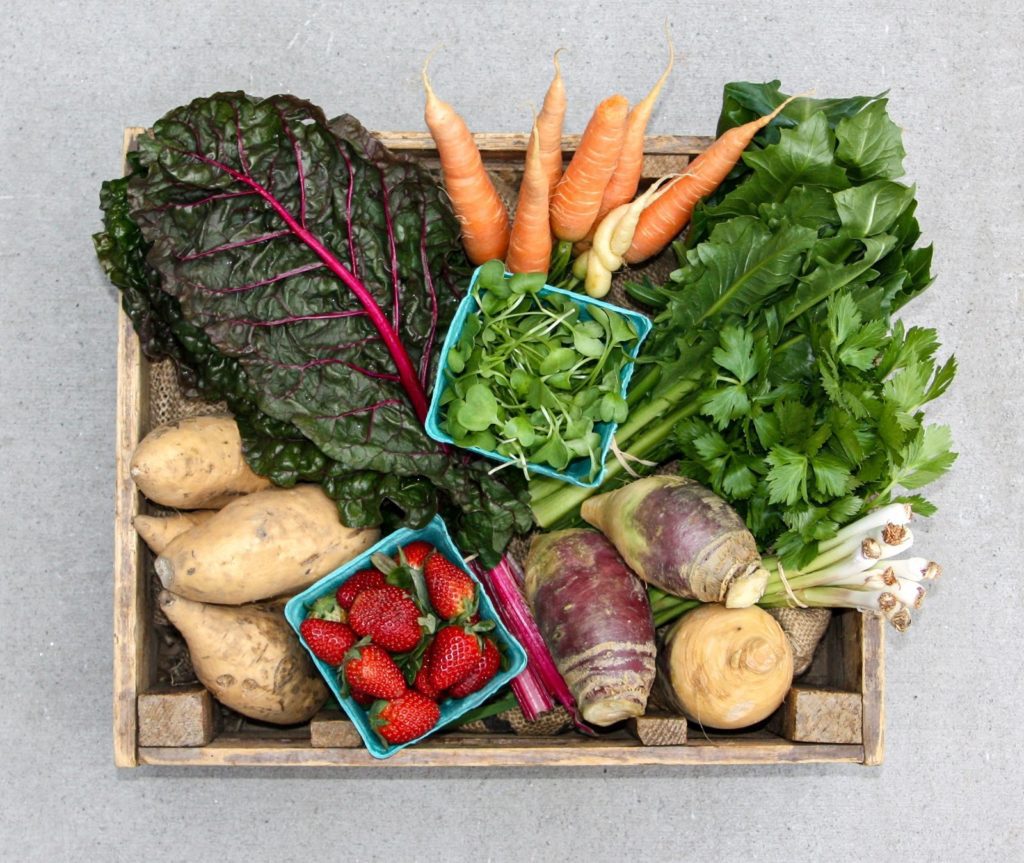
If you enjoyed this blog, check out this piece on how to keep an eco-friendly kitchen.
